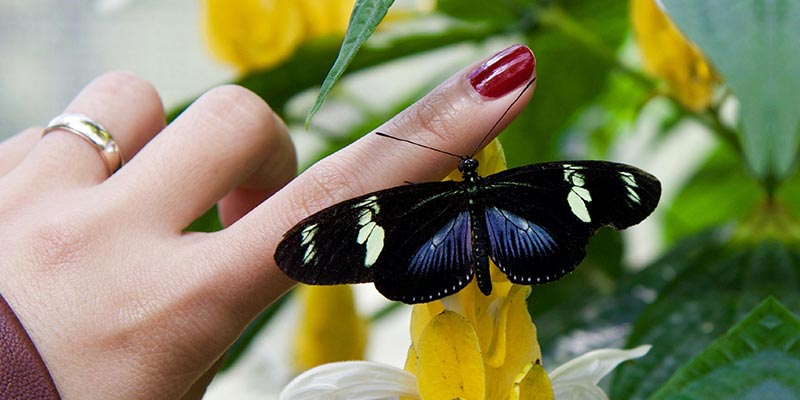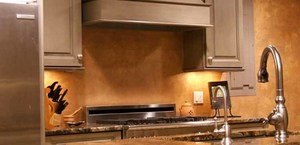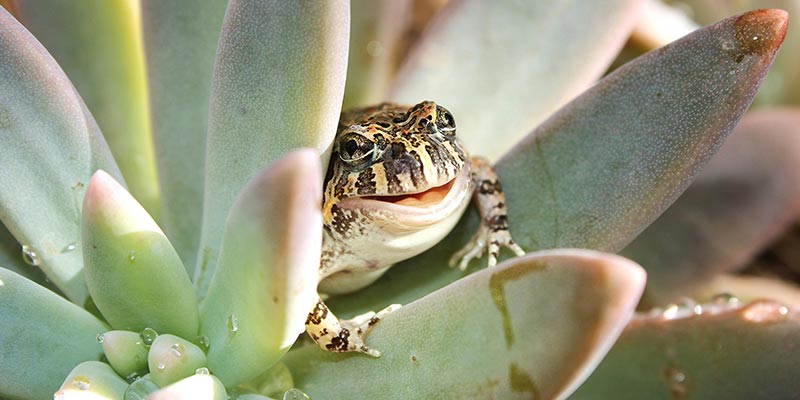Craft a wondrous tiny home garden with real butterflies! In this article, we show you how to create butterfly garden in your tiny home garden space.
Who doesn’t love butterflies? Butterflies are some of the most gorgeous and unique creatures that inhabit the earth, and having them fluttering around your yard is a beautiful sight to behold.
I simply love butterflies and the beauty they can bring anytime anyplace. I once visited The Butterfly House at Callaway Gardens in Pine Mountain Georgia, and it has always fascinated me and scared me at the same time, because I have never seen so many butterflies in one place at the same time. With a little work and planning you can create that same colorful atmosphere in your own tiny home garden.
You can welcome butterflies to your tiny home by creating a ‘butterfly garden’, which can be either elaborate or simple, depending on the effort you wish to devote. The great thing for tiny home owners is that butterflies don’t demand much space, just the right requirements. You can make a tiny butterfly garden in a window box outside your favorite window, or make a larger one as part of your landscaping.

How to Create Butterfly Garden for Your Tiny Home
Below is a simple 5 Step Plan showing you how to create butterfly garden, including a list of the best plants that will attract butterflies, so you can turn your tiny garden into a colorful fluttering wonderland.
Like with building a bird sanctuary in your tiny home garden, building a butterfly garden is dependent on three things: shelter, food and water.
Step 1: Do your butterfly research
Which butterfly species are in your region?
The first thing you need to do is a little research. Find out which butterfly species are common in your area and which ones you’d like to attract to your tiny home garden to give it life. The internet is a great place to start and you may want to purchase a butterfly field guide to help you decide.
It’s important to know which butterfly species are indigenous to your area. For example, the butterflies found in South Carolina may not be the same ones found in California. By making a butterfly garden with certain species in mind, you are also helping to increase their habitats, many of which are being destroyed daily because of the clearing of wilderness areas to build roads and homes.
Monarch butterflies are especially fascinating. Monarch caterpillars feed on and spin their beautiful green and gold chrysalises on the milkweed plant, and you can watch the whole process take place right in your tiny home garden!
Step 2: Choose the right plants for Your Tiny Home Garden
What plants do butterflies and caterpillars like to eat?
Secondly, and equally important, you need to know which plants and flowers caterpillars and butterflies like to eat. These will be heart and soul of your butterfly garden. These should ideally correspond with the species of butterflies you identified during your research. Having said that, you don’t need to get too precise about it. No matter what you choose to plant in your garden, just keep in mind that butterflies will come even if you don’t have the most perfect flowers.
To attract butterflies to your garden, you need to supply them with food for their young. Therefore, when choosing plants, you will need to choose plants to feed both the butterflies and their larvae (caterpillars). When you are thinking about how to create butterfly garden in your own tiny home space, make sure to include some of the following plants in your planning.
Caterpillar Host Plants
These plants will feed the caterpillars (larvae) and give a home to the egg-laying butterflies, so you must include these beauties.
- Milkweed – attracts the Monarch butterfly
- Parsley – attracts the Black Swallowtail caterpillar
- Sunflowers
- Pansies
- Clover
- Alfalfa
- Hollyhock
- Snapdragons
- Fennel
- Marshmallow
- Spice bush
Butterfly Attracting Plants
Choose nectar-producing plants and flowers that the adult butterflies can feed on. There is a huge variety of plants that fit this bill and some are listed below.
| Plant | Growth Habit | Butterflies It Attracts |
| Butterfly Bush | This aptly-named shrub is rarely without a group of butterflies covering it. Its wonderfully fragrant flowers come in shades of purple, white and blue, and is very easy to care for. Butterfly Bush is a large plant (4-6 feet tall). | This is a buddleia species that will attract butterflies that are looking for nectar. It will attract American lady, eastern tiger, cabbage white, pipe vine, orange sulfur, cross line skipper, monarch, red banded hairstreak, swallowtail and black butterfly. |
| Swamp Milkweed | Grows to about 3 feet tall. | Hosts the Monarch caterpillar. |
| Joe Pye Weed | This is a perennial that grows very large (up to 8 feet tall). | The Swallowtail likes this plant. |
| Butterfly Weed | This is in the milkweed family and is very tolerant to droughts. | It will attract cabbage white, eastern tiger, gray hairstreak, monarch, sleepy orange, silver spotted skipper, and the great spangled fritillary. |
| Anise Hyssop | This is great during drought and can withstand heat. It also will repel deer and rabbits, so if you have those pests around this is a keeper. | Various. |
| Phlox | This fragrant flower featuring clusters of lavender, red, pink, white or salmon colored blooms will be filled with the delicious nectar that butterflies crave. | Various. |
| Purple Cornflower (Echinacea) | This plant will grow in full sun or partial shade. This flower is extremely resistant to heavy heat and long droughts. | All butterflies love drinking the nectar of this long-blooming flower. It will attract little glass wings, wild indigo dusky wings, red spotted admirals, swallow tails, black, orange sulfur, banded hairstreak, clouded sulfur, and sachems. |
| Heliotrope | Grows to about 2 feet tall. It is a perennial in mild climates, but will not return year after year in cold climates. | Attracts many different species of butterfly. |
| Pentas | Great plant for the hot climates and will do well in droughts. Grows to about 2 feet high. This plant is an annual in cold climates, so keep this in mind when planting. | Attracts Swallowtail butterflies. It will attract hummingbirds as well as butterflies, so get ready for the show. |
| Zinnia | This perky flower will need full sun and well drained soil. It will look great planted near fennel. Grows to about 4 feet tall. It is an annual, but easy to start from seed each year. | Butterflies will flock to it. Attracts a variety of butterfly species, but the taller plants seem to attract more butterflies. |
| Bee Balm | Grows up to 2 feet tall. This plant will come back year after year. | Attracts various butterflies, as well as bees. |
| New England Aster | These perennials need full sun. Grows to 3-6 feet tall. | Many butterfly species love this plant. It will attract painted lady, orange sulfur, clouded skipper, sachem, swallowtail, Horace’s dusky wing, and a few others. |
| Lantana | They will do well in beds or in pots. They need full sun and well drained soil. My grandmother always had these in her yard and they will last for years. | Attracts various butterflies, as well as birds. It will repel deer as well. |
| Mexican Sunflower | This bright colorful flower needs full sun and well drained soil. If you want more than just plain old yellow sunflowers this will add color and pizzazz to any garden. | Various. |
Table caption: How to create butterfly garden – flower and plant recommendations
Step 3: Plan your butterfly garden
Once you choose all the flowers and plants you want, sketch an arrangement of your garden to make the actual planting much easier. It may be easier to draw your garden out on paper so you can visually see how each plant will look and grow with its surrounding neighbors.
How to create butterfly garden – planning tips
- Place perennials near the back since they return every year, and annuals near the front for easy replacement each season.
- Mix tall flowers with shorter ones, with taller plants behind shorter ones for a visually appealing result.
- Plant a mix of contrasting, but complementary, colors together, to create a visually stunning landscape both you and your butterfly friends can enjoy.
- Plan your butterfly garden according to the full-grown size of the plants and their individual needs for sunlight and water.

Step 4: Plant and monitor your butterfly garden
Buy your seeds and plants
Decide where you will purchase seeds and plants. You can get them at your local garden center or online, but if you decide to start your plants from seed, make sure you purchase them early enough to begin growing before spring arrives.
Plant, water and weed your garden
Plant your seeds and plants, paying close attention to the specific needs of each plant and make sure to keep them well watered until they get established. Weed your garden regularly so new plants don’t have to compete for space and can grow healthy and strong.
Step 5: Build a Tiny butterfly house in your tiny home garden!
Accessorizing your new butterfly garden with a butterfly house is a great way to protect your new friends from wind and other damaging weather, as well as from hungry birds. These specially-made houses feature butterfly-sized slots where they can go to safely feed on the additional nectar you provide. You can make one yourself if you are handy, or you can purchase one.
Finally… enjoy your tiny butterfly garden!
Once your plants begin blooming, you’ll notice more and more butterflies visiting your tiny home garden. Watch female butterflies laying eggs, caterpillars feeding and spinning cocoons and enjoy the new life in your garden.
When you create a butterfly garden around your tiny home, you will provide these fluttering beauties with food and shelter. You can be guaranteed that not only you are assisting with the protection and conservation of several endangered species, but that you will be enjoying the grace and glorious beauty of your new visitors all day, every day. So place a garden lounge chair in front of your garden, sit back and enjoy!
Did you enjoy this article ‘How to Create Butterfly Garden: 5 Step Plan’?
If so, you might also like: How to Create a Bird Sanctuary in Your Tiny Home Garden
Author

Hi, I’m Rach, the other half of NestKoo. I grew up on a sheep farm in Australia where I spent most weekends in the yard fixing or constructing something or other; essential DIY skills that I still use today at home or helping others.
View all posts










